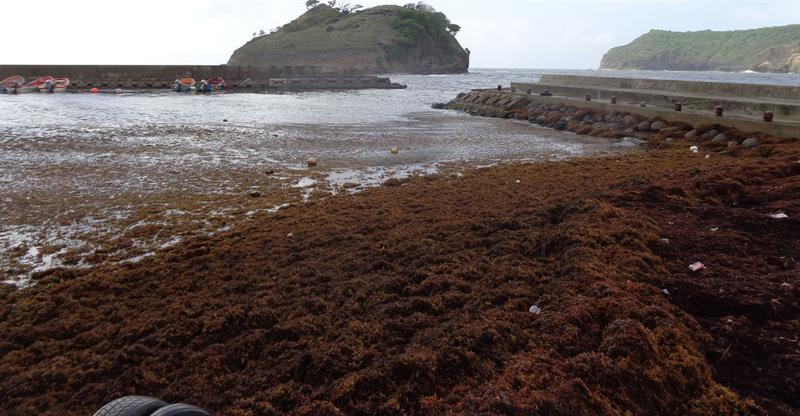Almost one year after masses of it washed up along Saint Lucia's beaches last August, smaller amounts of the seaweed persist.
 Head of the Oceans Governance Unit at the OECS Commission, Dr. Asha Singh, said sargassum, the seaweed that has been washing up along the island's eastern coast, has created some negative impact on the coastal shores of Saint Lucia.
Head of the Oceans Governance Unit at the OECS Commission, Dr. Asha Singh, said sargassum, the seaweed that has been washing up along the island's eastern coast, has created some negative impact on the coastal shores of Saint Lucia.
The losses are largely economic.
"Hoteliers have to spend large amounts of money to clean the beach constantly," she said. "We’re seeing fishermen who are saying their gear is being affected; and in Martinique, I was told that there is some impact to the aquaculture from the seaweed. It’s a growing problem and at the moment, there is no clear scientific link of ocean acidification to sargassum."
Dr. Singh said the presence of the seaweed reveals significant changes in the environment.
"The take away message is that the climate is changing and we need to respond in a more holistic way. We need to ensure we reduce the impacts of acidification.
"Sargassum has always been with us, but now we are seeing a large prevalence of sargassm and it’s persisting for a longer time in the OECS region."
Reports suggest that 2014/2015 saw the highest concentration of sargassum across the world.